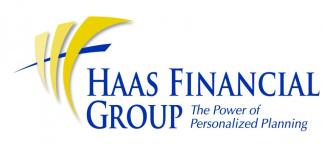Step 1: Discovery Call
The first step in our process is a short 30-minute phone call to learn more about each other and to see if the help you seek is the work that we do. This is a complimentary meeting and there are no pre-requisites to this consultation. We view this call as our opportunity to quickly learn what led you to reach out to us and how you believe we can help. While we may not get too deep into your questions, this call helps us both decide if we should schedule a more formal initial meeting. If we find we aren’t a fit, we promise to use this time to still point you in the right direction.
Step 2: Formal Initial Meeting
If it seems like there is basis for a relationship, we will schedule a 60-90 minute deeper dive into how you think and feel about money and how you’d like it to serve you. This is still a complimentary meeting. While not a pre-requisite, we do encourage that you share some financial data in this meeting so we can speak more specifically to the advice we would explore together and start to answer you questions.
This meeting is your opportunity to get to know us better, and see some of the tools we use in planning and how we communicate with our clients. Since financial planning with us is a very personal relationship, you'll want to know that we're both technically sound in the way we give advice, but that we are also the right personality fit for you.
For us, this meeting is about asking a lot of questions. While financial data is important, it’s the context around that data (who you are, what your experience with money has been, how you best make decisions) that is equally important. We want to get to know you as a person, not just as numbers on a bunch of financial statements.
Step 3: Data Gathering
This third step isn’t a meeting but does require your time and effort. We may ask you to share some more basic financial information with us. We don’t need all the details at this stage, just enough to be sure we understand the framework that makes up your financial life prior to drafting a proposal in the next step. We will share a clear list of what would be helpful to see, at that time.
You can share information in one of two ways. We can invite you into a custom, personalized and secure "vault" through our planning software called "eMoney". If we choose to work together, this data aggregation and client facing software acts as our relationship hub, a place for you to always see what's happening in your financial life, and a place where we share and store important documents. If you're not comfortable using this technology, you're welcome to share paper statements as well.
From there, we do some work behind the scenes. As a team, we work through your financial data, and in combination with all our meeting notes, start to assess what's going well, what is not, what questions we need to answer for you and how we could work together.
Step 4: Observations & Proposal
This step is on us. If we both feel like we're a good fit for each other, we offer to draft a financial planning relationship proposal for you where we will share what we heard was important to you, what we observed about your current financial life, questions we propose to answer for you, and quote a fee clearly defining compensation for partnering with you. The proposal will be tailored specifically to you, making it clear what you can expect from hiring us as your financial planners.
At this point, it's your decision whether you wish to work with us or not. If you feel our proposal is appropriate, we ask you to review our Financial Planning Agreement and appropriate disclosures associated with our work. This can be done electronically, or if requested, through a printed form.
*NOTE* all our advice is reviewed and signed off on by our compliance team at Great Vally Advisor Group, a protection for you (the client), which is why checks are never made payable directly to the Haas Financial Group.
You’ve decided you want to work with us. What’s next?
Step 5: Onboarding Meeting
We utilize our onboarding meeting to get our relationship off on the right foot – this meeting we do together whether in person, online or over the phone. We want to be sure we introduce the whole team, explain our partnerships, and use our time together to check the administrative boxes too. Then we'll do some additional intake to confirm your core values and beliefs, understand your feelings on risk and return, and confirm personal information. We'll capture the important people, places, and things in your life. By the end of the meeting, you’ll be plugged into our technology and planning tools to the extent that you wish to be connected, and we’ll have identified the most effective method(s) of communicating together throughout our relationship.
Step 6: Evaluating the Possibilities
This is where plan development happens, where we begin to put together the pieces of your plan, think holistically about how to address your fires, shape our answer your questions, and start to chart a course forward. In our office, we affectionately refer to this step as “Whiteboarding” because we often gather as a team to go through this process together, so we can think creatively, bounce ideas off each other, and be sure nothing slips past us!
Step 7: Strategy Meeting
This interactive meeting is our favorite step in the process! As we begin to share the outgrowth of our “Whiteboarding” this meeting is an opportunity to see the plan, educate you on your options, assess trade-offs to decisions, and consider multiple scenarios. Our planning tool as what they call the “Decision Center” which enables us to isolate different assumptions, variables and scenarios in your life so you can quickly see the impacts of decisions. Piecing different strategies together in real time makes the Decision Center feel like a planning playground in a way. It also offers us the opportunity to educate you all along the way.
Step 8: Putting Your Plan into Action
This is where implementation happens. We strongly believe that part of our role is to make sure the rubber hits the road. We are committed to helping you take action on your plan by clearly defining next steps to be taken, by whom, and by when. This table (Next Steps, By Whom, By When) is a staple of our business and all our meeting notes, as it holds us all accountable and organized to our work together. We have a well-defined process for how we track action items, and can share that tool called Knudge with you, if you’d like to have technology track and support you in completing your to do list items.
What happens after this initial period of planning is through?
It’s never our intent to build you a plan and send you on our way. Many clients choose to hire us as investment managers where we combine the processes of planning and investing going forward.
Learn more about our Ongoing Planning Relationship Learn more about our Investment Process

